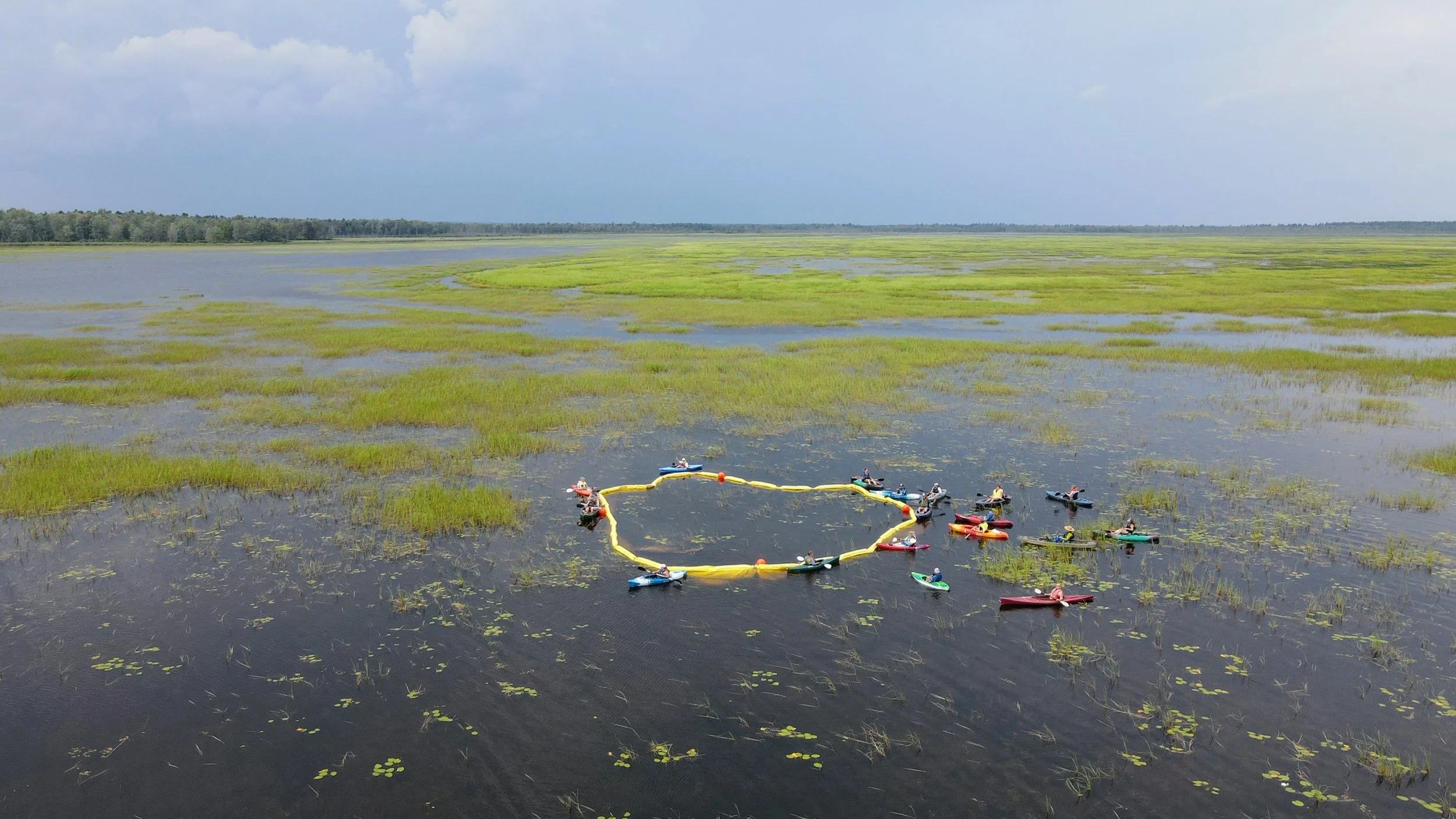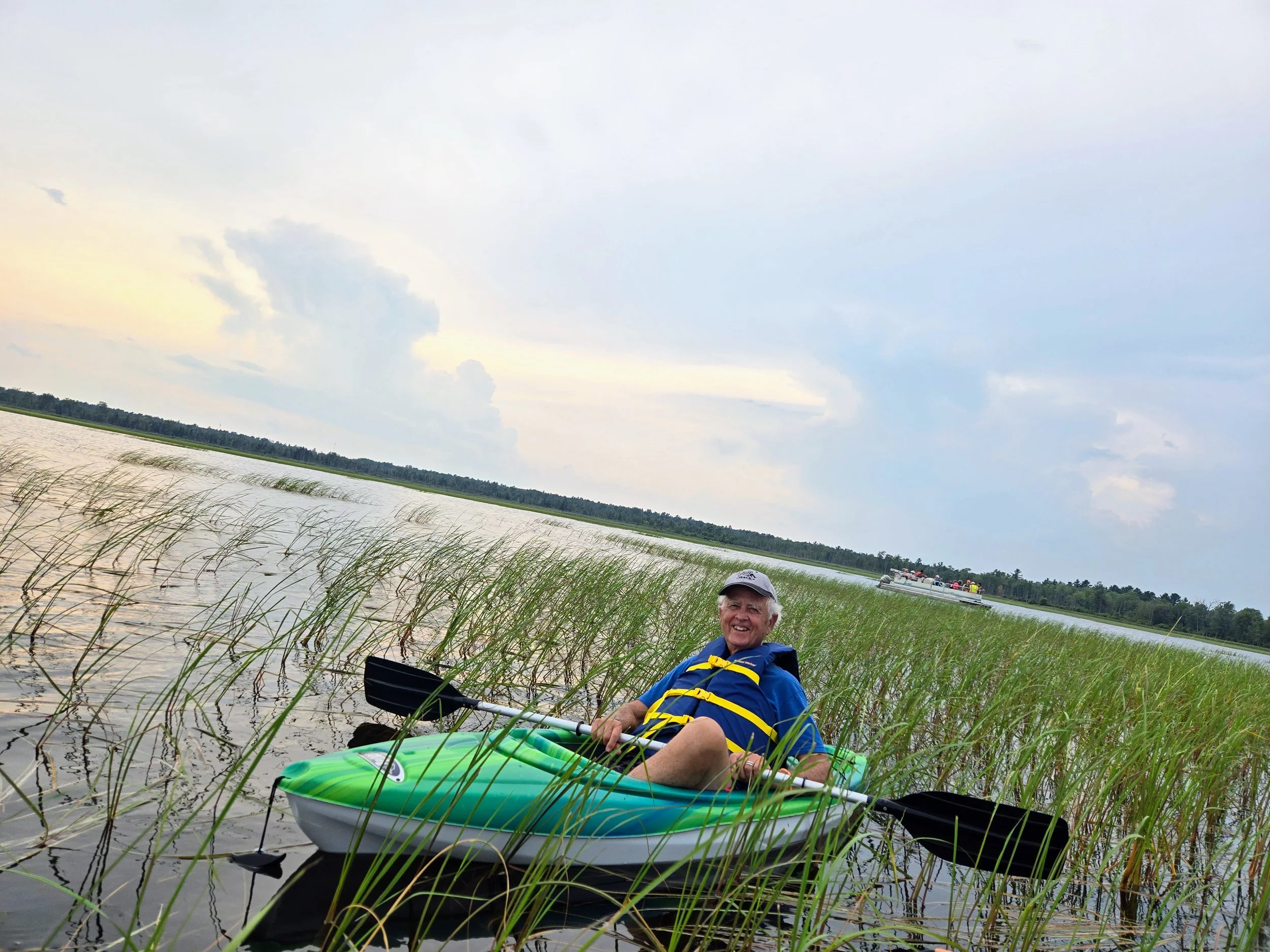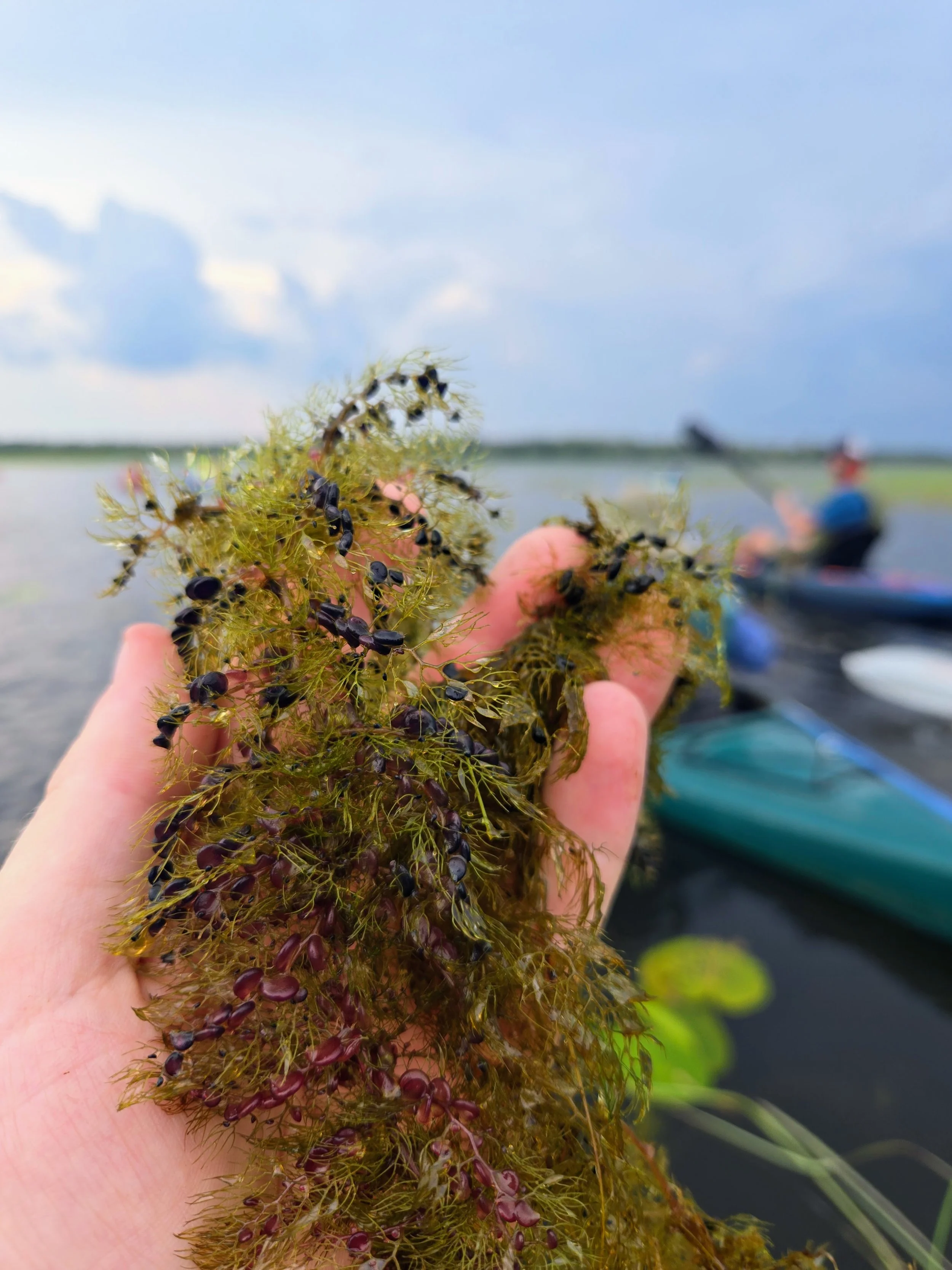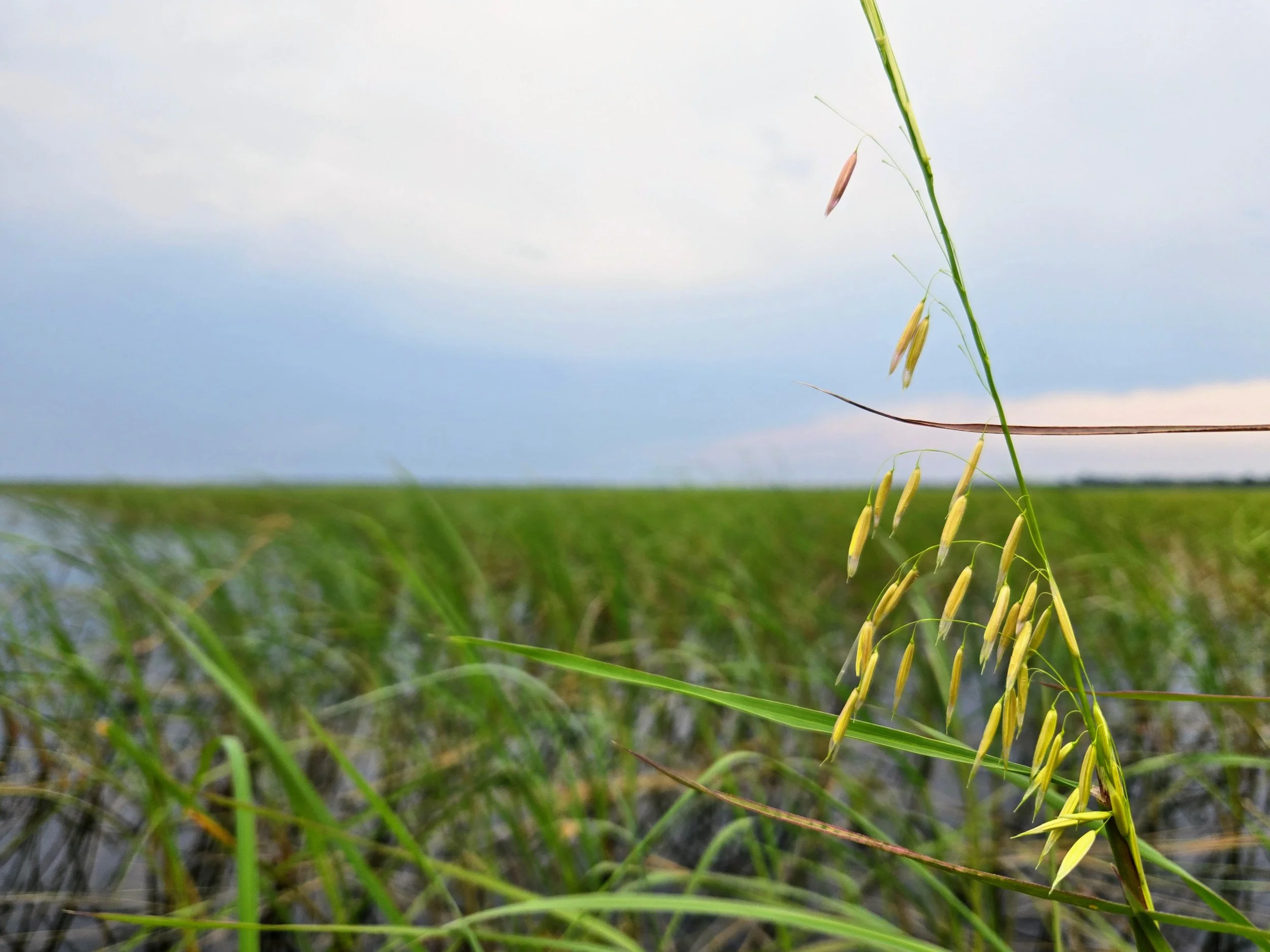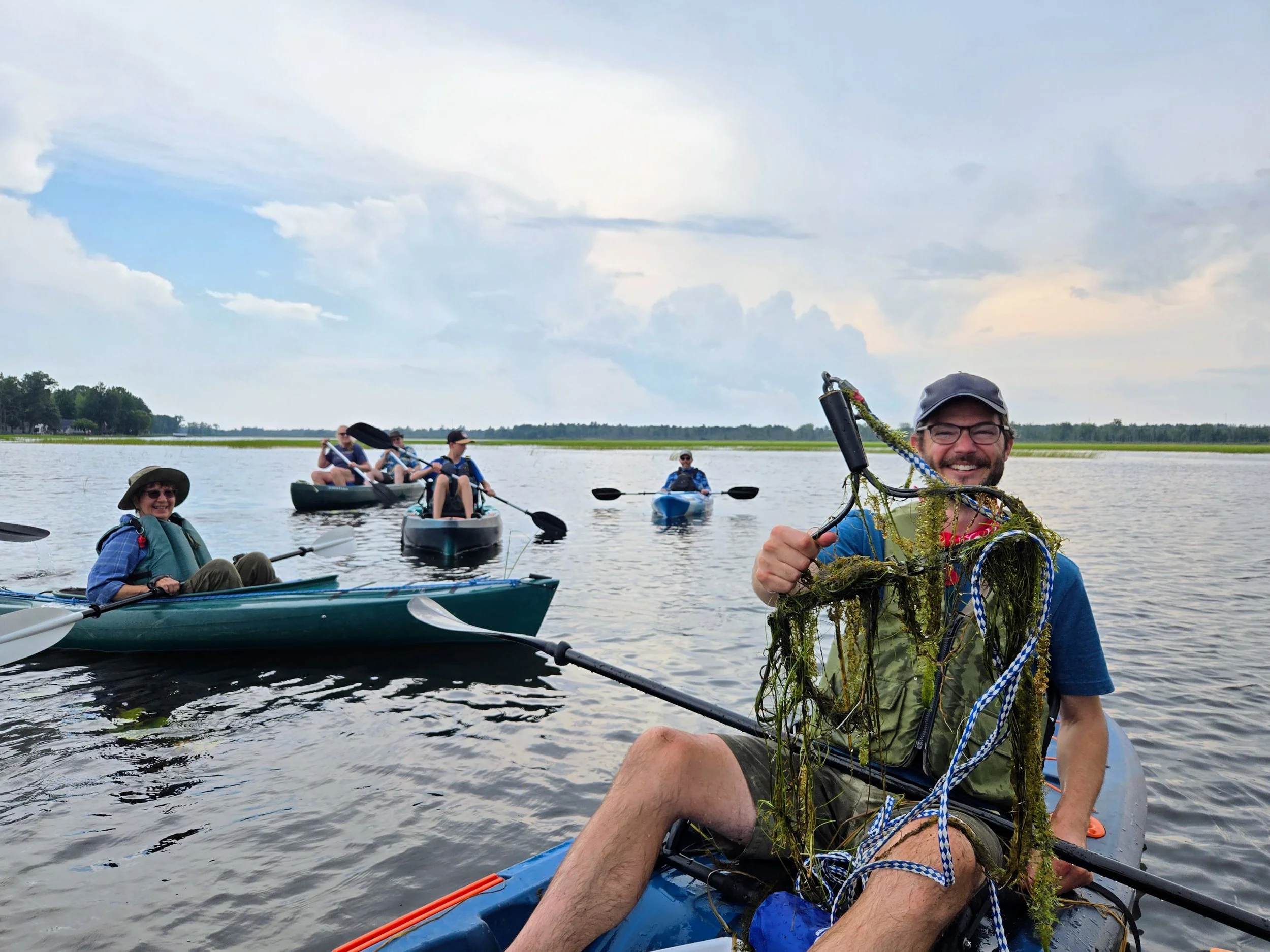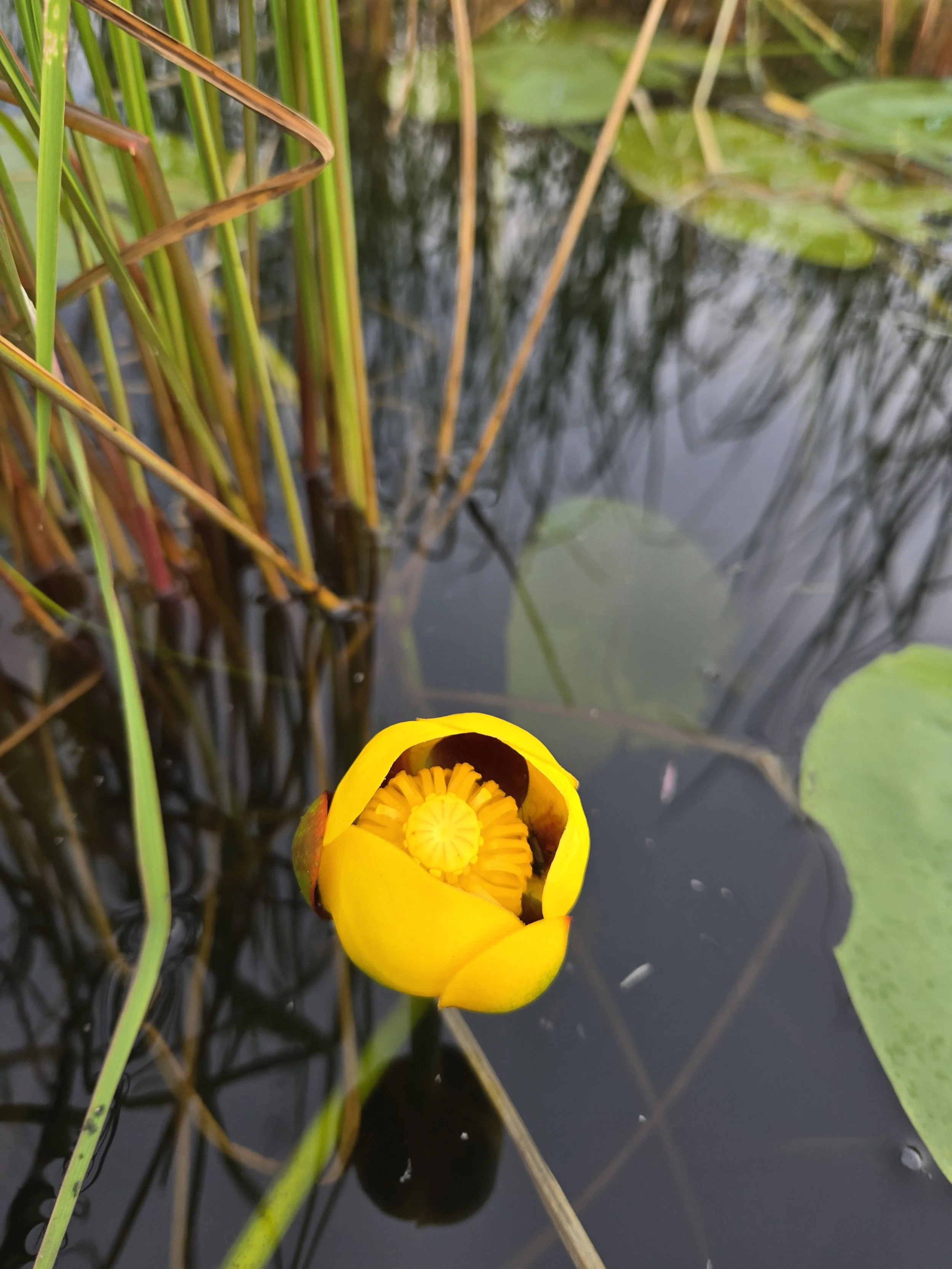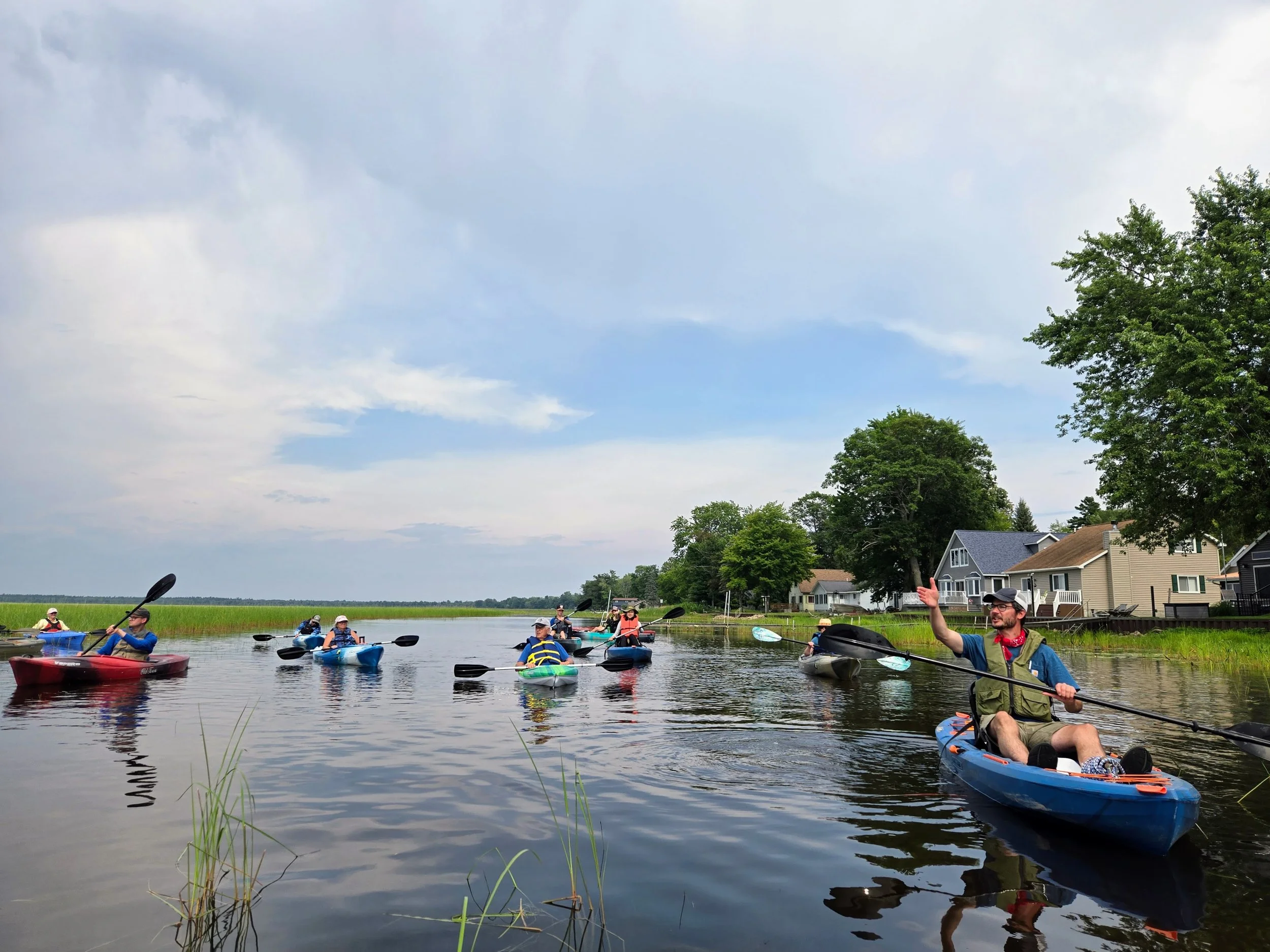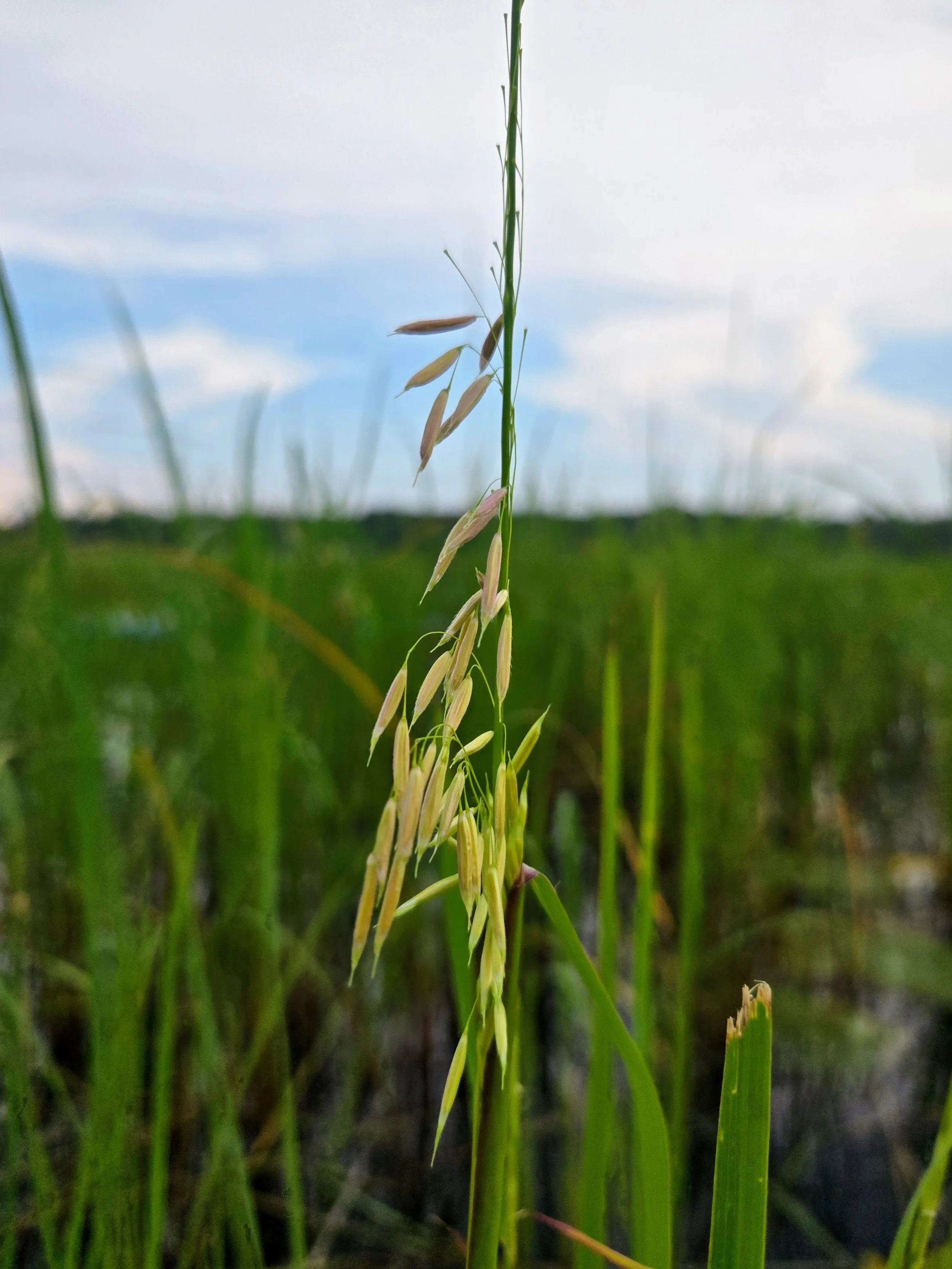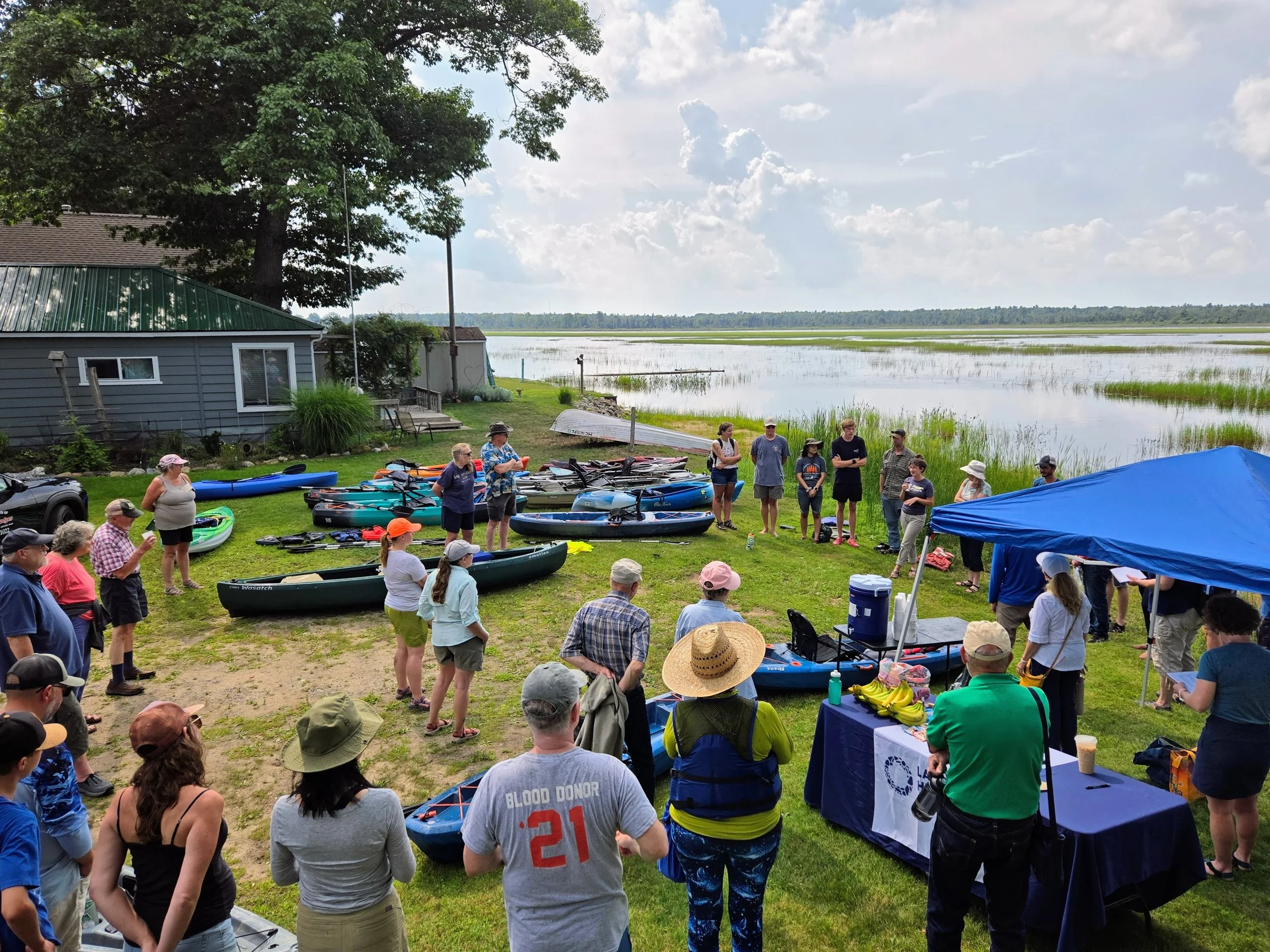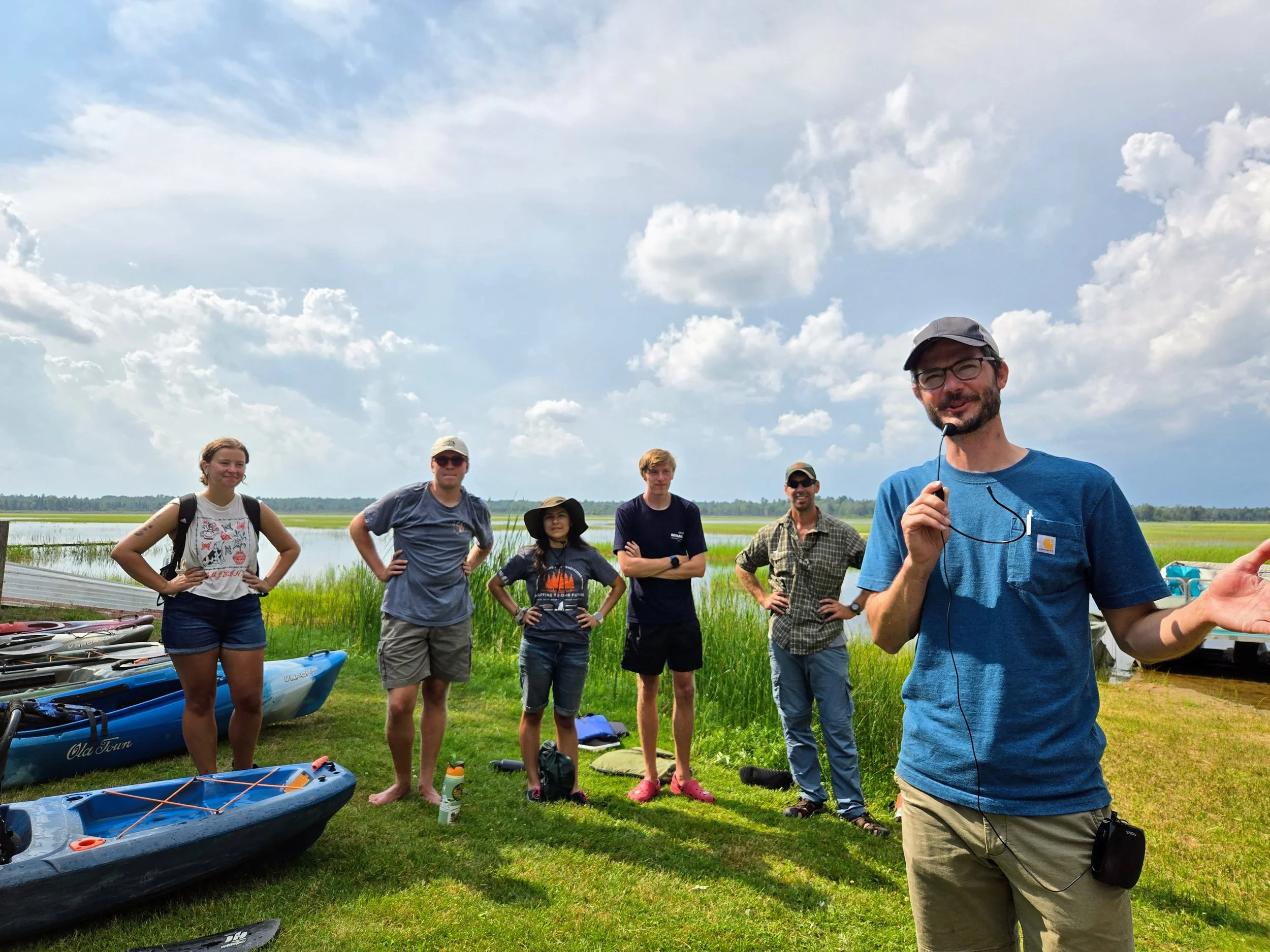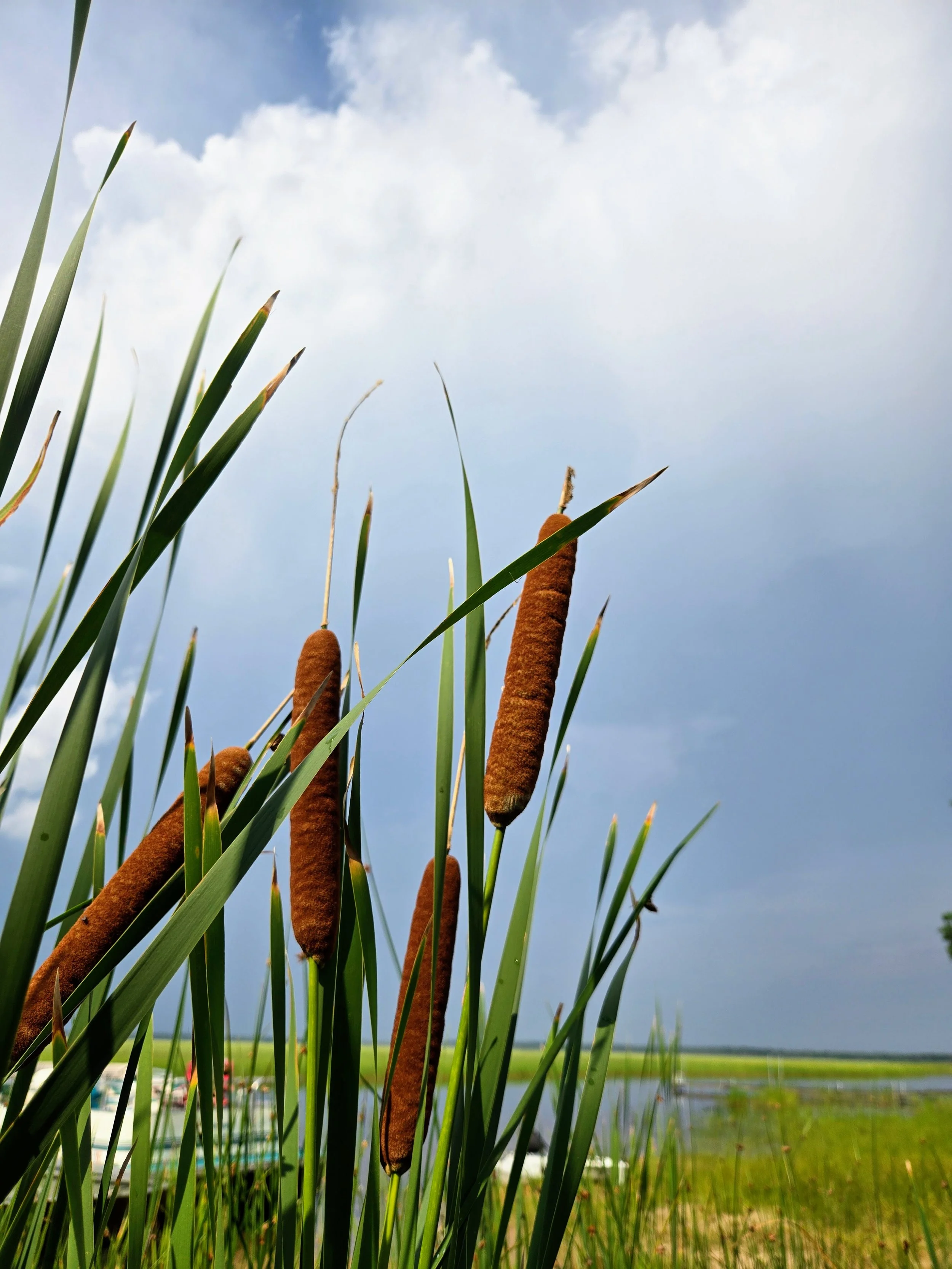Gallery: Exploring Plant Diversity, Wild Rice at Tawas Lake Day
A flotilla of kayakers explore the wild rice beds of Tawas Lake Aug. 8.
Paddling the quiet waters of Tawas Lake, where herons stalk the shore for frogs as eagles glide overhead, it’s easy to miss the dynamic plant ecosystem that’s living, breathing and feeding just below the surface.
At 1,600 acres, Tawas Lake is Iosco County’s largest inland lake. It’s also shallow, reaching a maximum depth of just five feet, and water levels fluctuate as nearby Lake Huron undergoes its 20-year cycle of highs and lows. Change is constant at Tawas Lake—the good kind of change that allows its thriving community of native aquatic plants to ebb, flow, share space and persist—but invasive species threaten to bring big changes in a bad way.
Huron Pines and our conservation partners at MSU Extension, Michigan EGLE, Saginaw Chippewa Indian Tribe and Tawas Lake Association work together to monitor for and manage invasive aquatic species at Tawas Lake. Invasive plants like Eurasian milfoil, narrowleaf cattail, starry stonewort and others all have the potential to severely disrupt this sensitive ecosystem by outcompeting native ones, making these monitoring and treatment efforts crucial in preserving the lake’s natural character. During the paddle, attendees visited a cordoned-off area where diver-assisted removal of Eurasian watermilfoil is underway.
Erick Elgin (l), a limnologist with MSU Extension, hands off a sample of native aquatic vegetation to a participant of Tawas Lake Day.
On Aug. 8 we welcomed 32 people for an evening paddle tour of the lake during our annual Tawas Lake Day, where Huron Pines and our partners share this important conservation work with the public and introduce them to some of the lake’s unique natural features.
The most visible of these—and perhaps the most important for wildlife and people—is the expanse of wild rice covering much of the lake. This is Michigan’s largest wild rice bed, providing vital forage for migratory waterfowl, habitat for fish and other native plants, and a culturally important food for the Saginaw Chippewa Indian Tribe who know, steward and harvest it as manoomin.
Grains of wild rice develop from their stalk on Tawas Lake, home to Michigan’s largest expanse of this ecologically and culturally important plant.
Below the surface exists a complex network of more than 40 species of native plants, each providing an essential function in this hidden world. They create dense underwater forests for small fish and amphibians to shelter, take up extra nutrients into their tissues and fix the soft lake bottom in place with their roots. One species, bladderwort, uses underwater traps to capture and digest tiny prey. The opportunity to see such biodiversity in a single body of water isn’t just rare, it’s practically unheard of.
“The sheer diversity of native plants here is unmatched in our data so far,” said Olivia Coskie, an MSU master’s student who was among a number of researchers conducting a plant survey of Tawas Lake. “It's phenomenal."
MSU master’s student Olivia Coskie holds the flower of a water lily, one of more than 40 aquatic plant species observed by her research team on Tawas Lake.
“I'm on the water all the time fishing and I had no idea there were carnivorous plants here,” said Josh Chornyak, who attended the event.
We want to thank our friends at MSU Extension, Michigan Department of Environment, Great Lakes, and Energy, Saginaw Chippewa Indian Tribe, Tawas Lake Association, City of East Tawas and Baldwin Township for their support of the event and their ongoing stewardship of this natural treasure. Tawas Lake Day is an annual event and will be held again in 2026.
Enjoy a deeper look at Tawas Lake Day in the gallery below.


